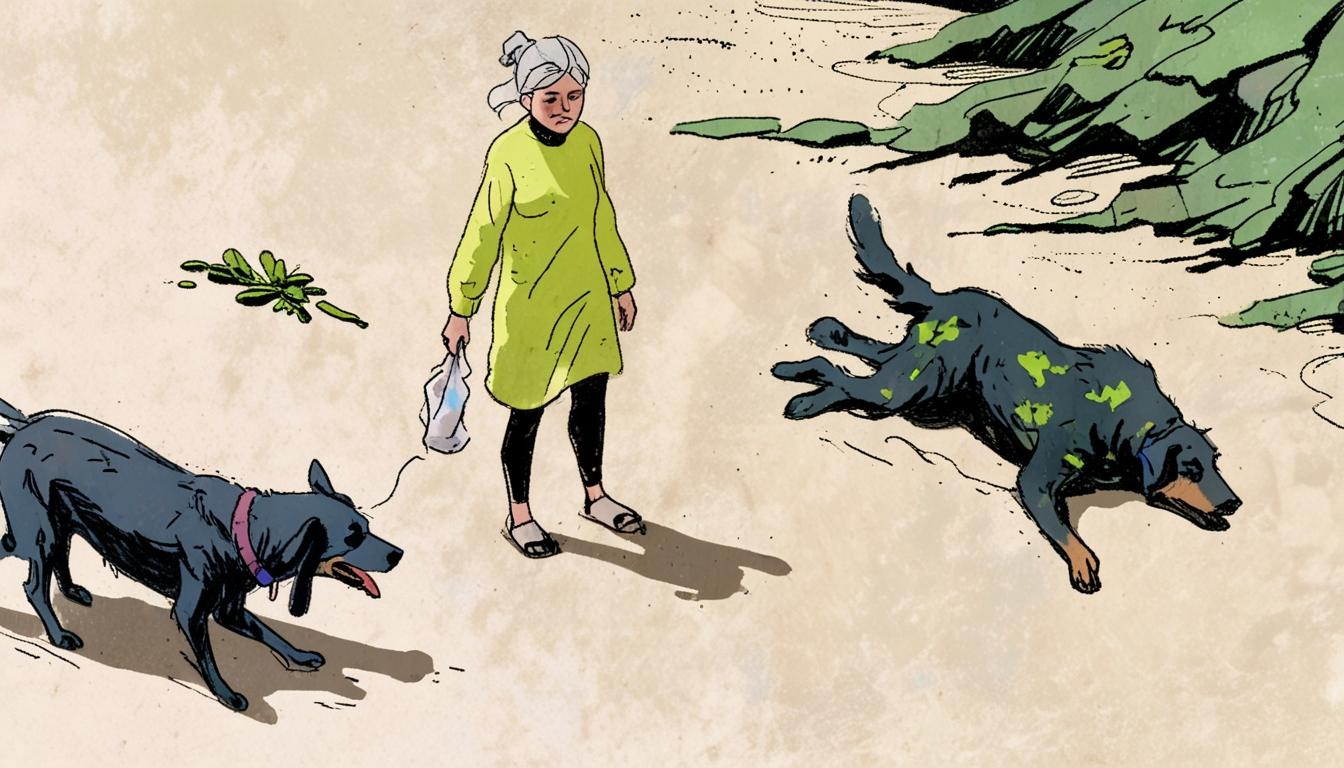A woman from County Down has voiced her distress over the deteriorating condition of a Bangor beach, which she believes contributed to the tragic death of her dog after it consumed toxic seaweed. This incident highlights a worrying trend as increasing reports emerge regarding the dangers that certain environments pose to pet health.
The alleged death of the woman's dog follows similar cases that have sparked alarm among pet owners across Northern Ireland. For instance, a German Shepherd named Jack tragically died after ingesting the highly toxic root of the hemlock water dropwort during a beach outing in Drain's Bay, County Antrim. Despite not consuming the plant directly, Jack was poisoned after picking it up in his mouth. In response to this incident, Larne Borough Council took the initiative to remove 15 kilos of the toxic plant from the beach and erected warning signs to alert dog owners of the hazards present.
The dangers posed by toxic flora are not limited to beach settings. A 16-month-old Labrador named Bella succumbed to 'algae poisoning' after a swim in Craigavon Lakes. Bella's owner, Natalie McVeigh, was shocked to learn about the risks of algae poisoning when she noticed her dog displaying symptoms such as severe vomiting and lethargy. Despite veterinary intervention, Bella passed away four days later, and McVeigh lamented the lack of public awareness surrounding the threats posed by contaminated water bodies.
Contaminated beaches are often the sites of tragic incidents involving pets. A dog named Maisey was euthanised after ingesting rancid fat washed ashore on Llangennith beach in Wales, a substance which has been reported across several coastal regions. Such incidents have led to warnings for pet owners, advising them to keep their dogs away from potentially harmful materials found along beach fronts.
Moreover, warnings regarding toxic substances have also been extended to areas not immediately associated with pollution. In one case, dog owner Heather Baird reported her dog Teddy died within hours of walking on Castlerock beach, despite her prior concerns about pollution levels. Investigations revealed the presence of cyanobacteria, known to create harmful toxins even in locations far from prominent pollution sources.
The health risks posed by harmful algal blooms have gained further scrutiny from environmental agencies, with reports documenting several dog deaths linked to these blooms. The Environmental Working Group has highlighted the dangers of cyanobacteria, which can release microcystins—poisons that not only threaten aquatic life but also pose serious health risks to both pets and humans.
As concerns grow, it is crucial for pet owners to remain vigilant and informed about the environmental hazards that may lie in wait during a routine outing. The experiences shared by dog owners across Northern Ireland underscore the urgent need for better education and preventive measures to protect the health of our four-legged companions.
Reference Map
- Paragraphs 1-2: Source 1, Source 2
- Paragraphs 3-4: Source 3
- Paragraph 5: Source 4
- Paragraph 6: Source 5
- Paragraph 7: Source 6
- Paragraph 8: Source 7
Source: Noah Wire Services
